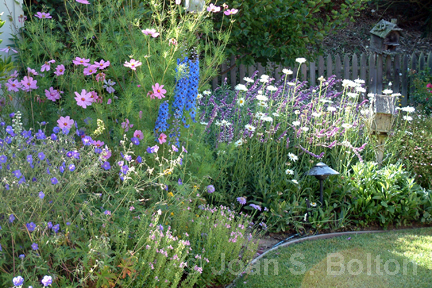
What a tease.
Spring is nearly here, enticing us with blue skies, puffy white clouds and warmer temperatures. Yet there’s no guarantee that we won’t see at least a few more rounds of rain and blustery winds.
I’m not complaining. Our gardens can certainly use any extra rain. But further, unsettled weather and soggy soil can make it difficult to begin spring planting.
Instead of digging in the dirt quite yet, there are other chores you can tackle. Think of them as spring cleaning, rather than spring planting.
Spring Cleaning
Trim, rake, mulch and weed in any order you like.
Take a hard look at your shrubs and perennials. If they already stand shoulder to shoulder, they’re bound to need reining in so that they’ll have room to grow and bloom this year.
Be bold, but reasonable. While you should not hack them into nothingness, you don’t want to prune so lightly that you’ll have to continue to snip the edges all spring and summer. That’s a lot of busy work. Plus, you’ll reduce flowering, by always nipping the buds.
As for trimming roses and deciduous fruit trees, it is late. But if you haven’t done so yet, dive in. Otherwise your plants won’t produce as well. And they’ll be brushy and overgrown by the end of summer.
Remove any dead wood, crossing branches or awkward growth. Roses can be trimmed back to 12 to 18 inches tall at this point. Make the cuts just above outward-facing buds. Prune your fruit trees according to type. For instance, peach trees bear on new wood produced the previous summer, while apple trees bear on the same fruiting spurs every year.
Rake away any dead flowers, old fruit or wasted remains from last summer’s vegetable garden. Then add a fresh, inch or two-thick layer of mulch.
Make sure the mulch doesn’t mound up and over the trunks or stems of any of your plants. When the mulch absorbs moisture, that constant, moist contact against the trunks or stems can lead to rot and disease.
Weed like a crazy person. All that rain, compounded by increasingly longer days and sunny skies, guarantees a bumper crop of weeds this year.
Hoe, hand-pull or mow. The weeds are not tenacious yet, but they will be once the soil dries out.
Whatever you do, don’t let them go to seed, at which point you’ll face an even bigger battle next year. When the weeds in my garden become overwhelming, I use kitchen scissors to snip the flowering tops, then go back later to yank out the rest of the plants.
Spring Planting
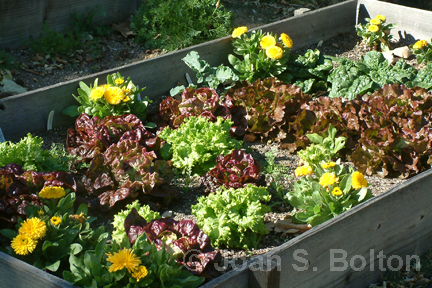
There’s still time to squeeze in one more round of cool-season lettuce and leafy greens. Growing from seed is questionable, as that can add 3 to 4 weeks to the time until harvest. But you should have plenty of time if you buy transplants.
Then, if your soil is too wet to work, plant the greens in broad containers filled with fertile, fluffy soil at least 6 inches deep. Place them where they’ll get a minimum of four to six hours of sunlight daily.
Also go ahead and sow seeds of your summer crops in flats, pony packs or other containers that are at least 3 to 4 inches deep and have drain holes. Put the containers in a warm spot with bright light. That might be indoors, on top of a refrigerator or next to a south-facing window. Outdoors, find a warm place, out of the wind.
Summer crops to start from seed include tomatoes, beans, cucumbers, eggplants, melons, peppers, pumpkins, squash and tomatillos. Wait until May or June to sow corn directly in the ground. You can also wait until then to direct-sow any of the larger seeds, such as beans, melons, pumpkins and squash.
Now for Color
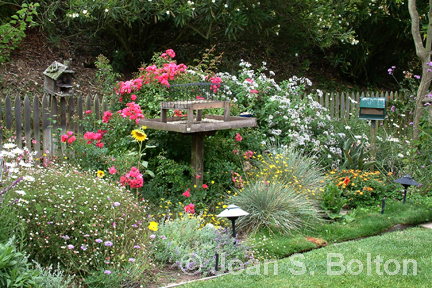
Once your soil is ready to work, spring is a great time to plant all sorts of flowering annuals, bulbs, perennials, shrubs and trees.
Spring bedding plants to set out include asters, cosmos, dianthus, lobelia, marigolds, petunias and zinnias.
Summer-blooming bulbs include tuberous begonias, caladiums, cannas, dahlias, gladiolus and Mexican tuberose.
Perennials run the gamut, from fragrant nemesias and splashy verbenas to longer-lived and water-thrifty lavenders, rosemaries and sages.
Now that all danger of frost has passed, it’s also time to put in bougainvillea, dipladenia, gardenia, hibiscus and other colorful, subtropical plants.
Once your deeper soil has dried out adequately, you can also plant any kind of citrus, along with avocado trees. Just be sure to provide protection from frost and excellent drainage, particularly for avocados.
Water-Saving Tips
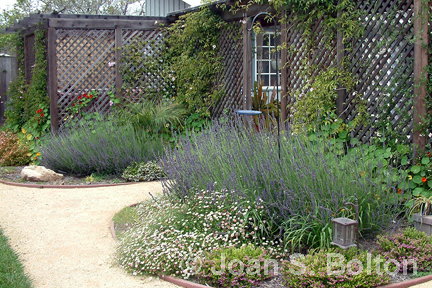
With a greater emphasis than ever on conserving water, it’s important to group your plants according to their irrigation needs.
Use a drip system to water those that prefer to go dry between waterings, such as natives, succulents and most Mediterranean plants. Give them a long, deep soak once or twice a month.
If you have a lawn, position thirstier plants around it, so that they can capture overspray from the sprinklers, along with moisture that migrates underground.
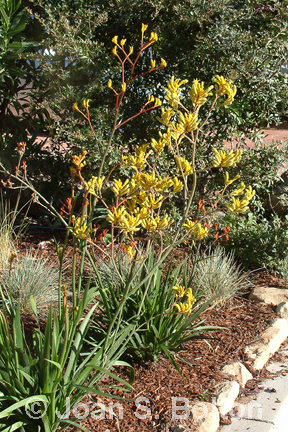
Run your sprinklers first thing in the morning, before any wind can blow the water astray.
Let your grass grow 2 1/2 to 3 inches tall during summer. The longer blades will keep the soil surface cooler and help retain moisture.
In all planting areas, apply a mulch at least two inches thick. The mulch will protect roots from swings in temperature, keep the soil moist longer and reduce weeds.
≈
Icky Sticky
It’s tempting to dig the instant it’s sunny. But after the ground-soaking rains over the past few months, don’t do it. Working the soil while it’s sopping wet can wreck the texture.
Here’s why: plants need oxygen to reach their roots. Ordinarily, soil has tiny nooks and crannies for oxygen — and water and nutrients — to pass through. Sandy soil is composed of relatively large, rough soil particles, so has plenty of gaps. Clay soil is composed of smoother, fine-textured particles, so has fewer gaps.
Either way, the soil becomes saturated when water fills those spaces, and working it will create a sticky, compacted mess. Even walking regularly on saturated soil can pack it down and push out any remaining air. With few or no air pockets left, it’s difficult for the water to drain. That’s hardly a good start for new plants.
Sandy soils dry out faster than clay because they don’t hold as much water. Test your soil by scooping up a handful and squeezing it. If it’s sandy and sticks together or water streams out, it’s not ready. If it’s clay and packs into a shiny, slick mud ball, wait as well.
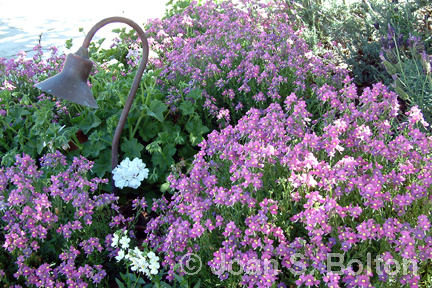
Try again in several days. If you’re planting shallow-rooted annuals, the top 6 to 8 inches of soil should be workable.
For a vegetable garden or a one-gallon plant, test down at least 1 foot. For a 5-gallon shrub, test down 18 inches. To plant a 15-gallon tree, check down at least 2 feet.
If you do go that big, you can dig your hole over a series of days. Spread the soil that you’ve removed and wait for each layer to dry out before digging further.
≈
Seeds of Wisdom
Warmer temperatures and longer days spur new growth in most plants. Spread a slow-release, balanced, granular fertilizer around the root zones of your perennials, shrubs, roses and trees to give them a boost and water it in. Also fertilize your lawn, repair any bald spots or lay new sod. The new turf will root out quickly.
≈
Copyright, Joan S. Bolton. All rights reserved. Reproduction of text or photos in any form is prohibited without written permission.
≈
